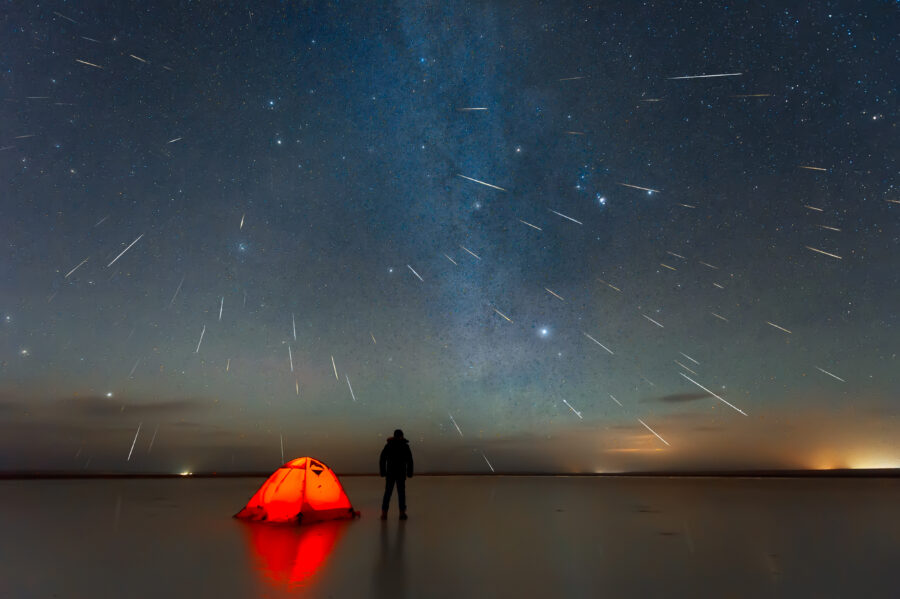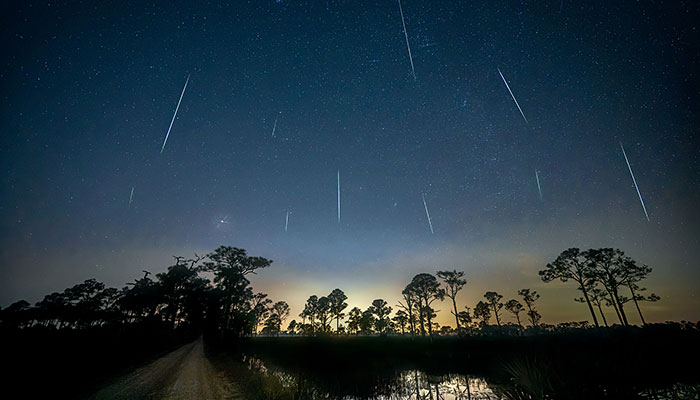Where did the Geminid meteors come from?

Fred Watson
Fred Watson

This is the Geminid shower, named after the constellation from which the meteors seem to come as they flash across the sky, vaporised by their rapid entry into our planet’s atmosphere.
Their origin from a single point in the sky is just an illusion of perspective, because the meteors are actually moving on parallel tracks. What is more interesting is their true origin – where did the Geminid meteors come from? And that has been an enduring mystery for astronomers.

Throughout each year, we experience several meteor showers as Earth passes through other trails of dust, which are left behind by comets – mountain-sized objects made of ice and embedded dust particles. These “dirty icebergs” move around the solar system in very elongated orbits, and as they approach the Sun, the ice turns into vapour and releases the dust, which trails behind the comet to become a meteor shower when Earth passes through it. Straightforward space geometry allows us to identify which comet causes each shower.
But the Geminids are different. The object from which they come is not an icy comet, but a rocky asteroid called Phaethon, discovered in 1983. The puzzle is that asteroids don’t normally give off dust when they are heated by the Sun, so why should Phaethon?
Now a group of researchers based at Princeton University in the USA have come up with an answer based on new data from a NASA Sun-orbiting spacecraft called the Parker Solar Probe. This intrepid robot swoops closer to the Sun than any other satellite, and can detect grains of space dust with its various sensors.
The scientists have found that, close to the Sun, the dust particles associated with the Geminid meteor shower travel slightly off the track of Phaethon, whose orbit they match in other respects. The scientists say the most likely explanation for this is that sometime in the past, Phaethon suffered a violent impact from another asteroid. The resulting dust cloud gradually spread around Phaethon’s orbit, mimicking the dust trails left behind by comets and creating the remarkable Geminid shower.
Track this year’s Geminids in Australian skies here.


